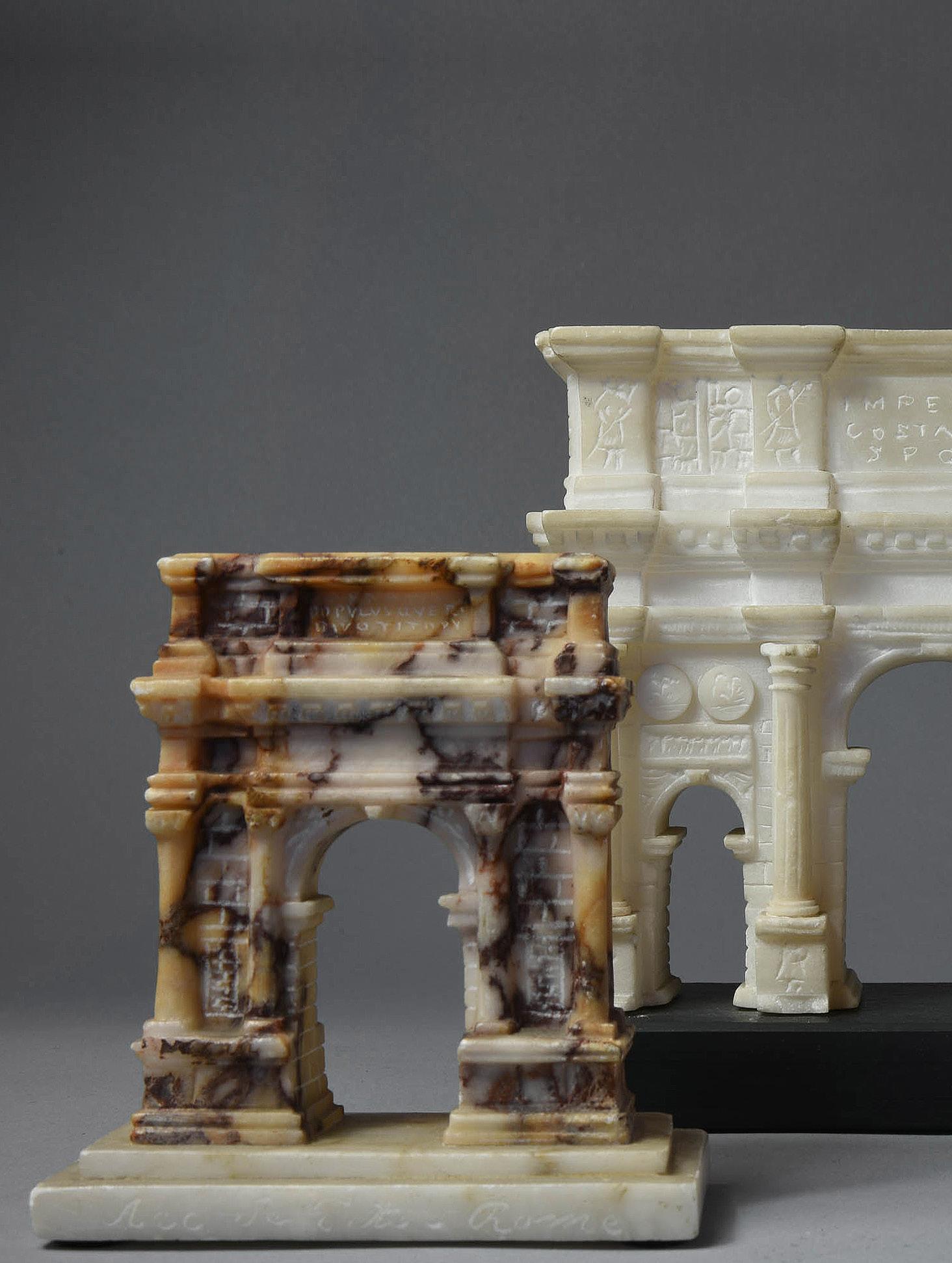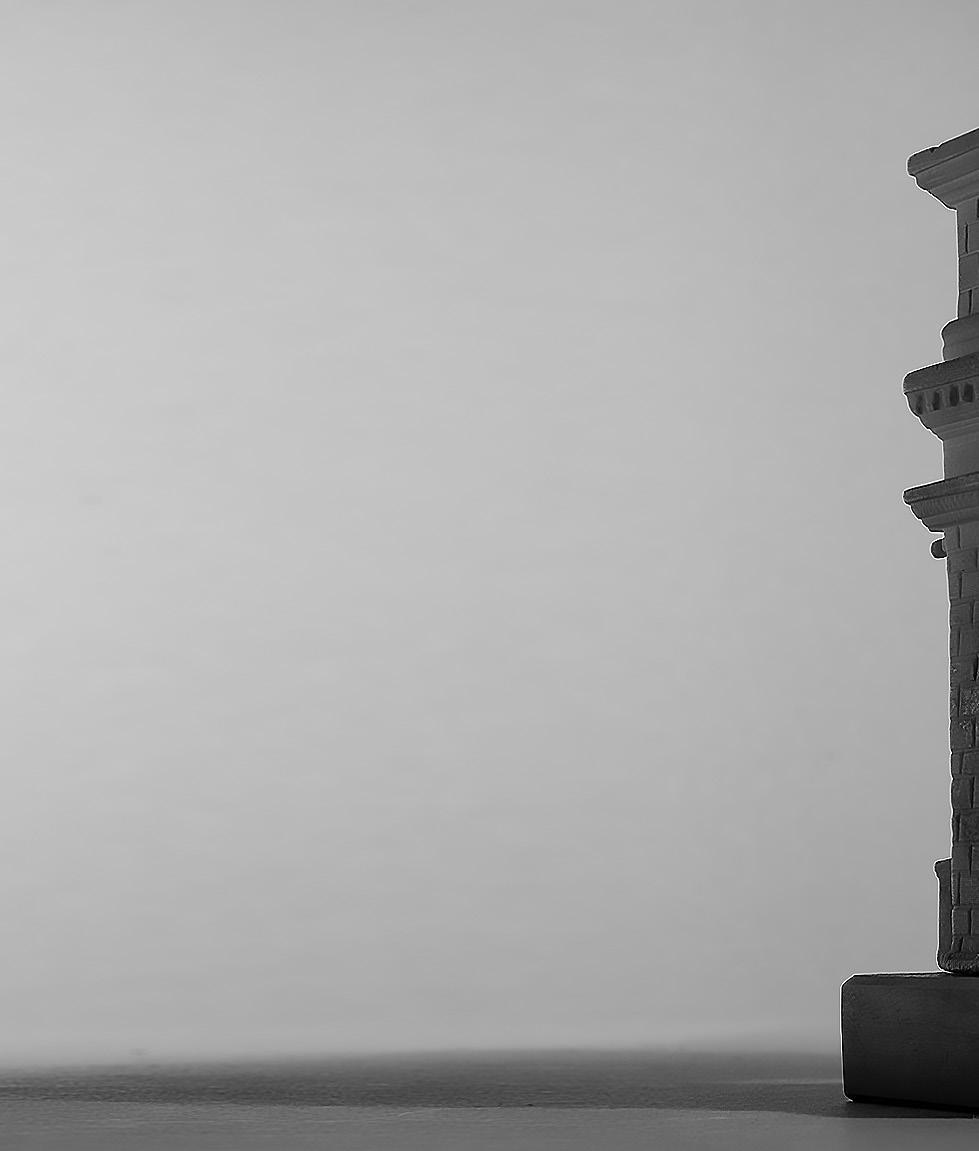
1 minute read
VI. B.Arch of Constantine 42, Cover VI. C. Arch of Septimius Severus
VI. Three Arches in the Roman Forum, carved in alabaster
A. Arch of Titus, 4-1/8”h., c. 1880, alabaster on alabaster base. See Pricing.
B. Arch of Constantine, 6”h., c. 1880, alabaster on black marble base. See Pricing.
C. Arch of Septimius Severus, 3-3/4”h., c. 1880, tinted alabaster on alabaster base. See Pricing.
In the late 19th century, as production of Roman architectural mementos increasingly shifted to models carved in Italian alabaster from Volterra, south of Florence, the subjects of these souvenirs changed as well. Before then, few scarpellini undertook marble models of Rome’s triumphal arches. Alabaster, much less expensive than marble and considerably softer and easier to work, encouraged new subjects like those offered here.
Unsurprisingly, reductions of the Arch of Constantine occur more frequently than those of other of the city’s arches. Our Arch
of Constantine is carved from unusually translucent Volterran alabaster. Both this and the Arch of Septimius Severus were fashioned before Volterran quarries only offered the bright white, granular alabaster seen in objects from c. 1890 well into the 20th century. The offered model of the Arch of Titus displays a seldom seen, highly figured, polychrome alabaster, again from Volterra. Until its 1809 restoration by architect Guiseppe Valadier, the Arch of Titus, at the entrance to the Forum, was difficult to make out – substantially ruined, missing important architectural elements, and hidden beneath layers of later accretions.
In this way, it was unlike two other triumphal arches in the Forum – the Arches of Constantine and Septimius Severus, which, though their lower portions were buried, remained largely intact, visible, better known; and more often emulated in souvenir monuments than Titus’ monument.







